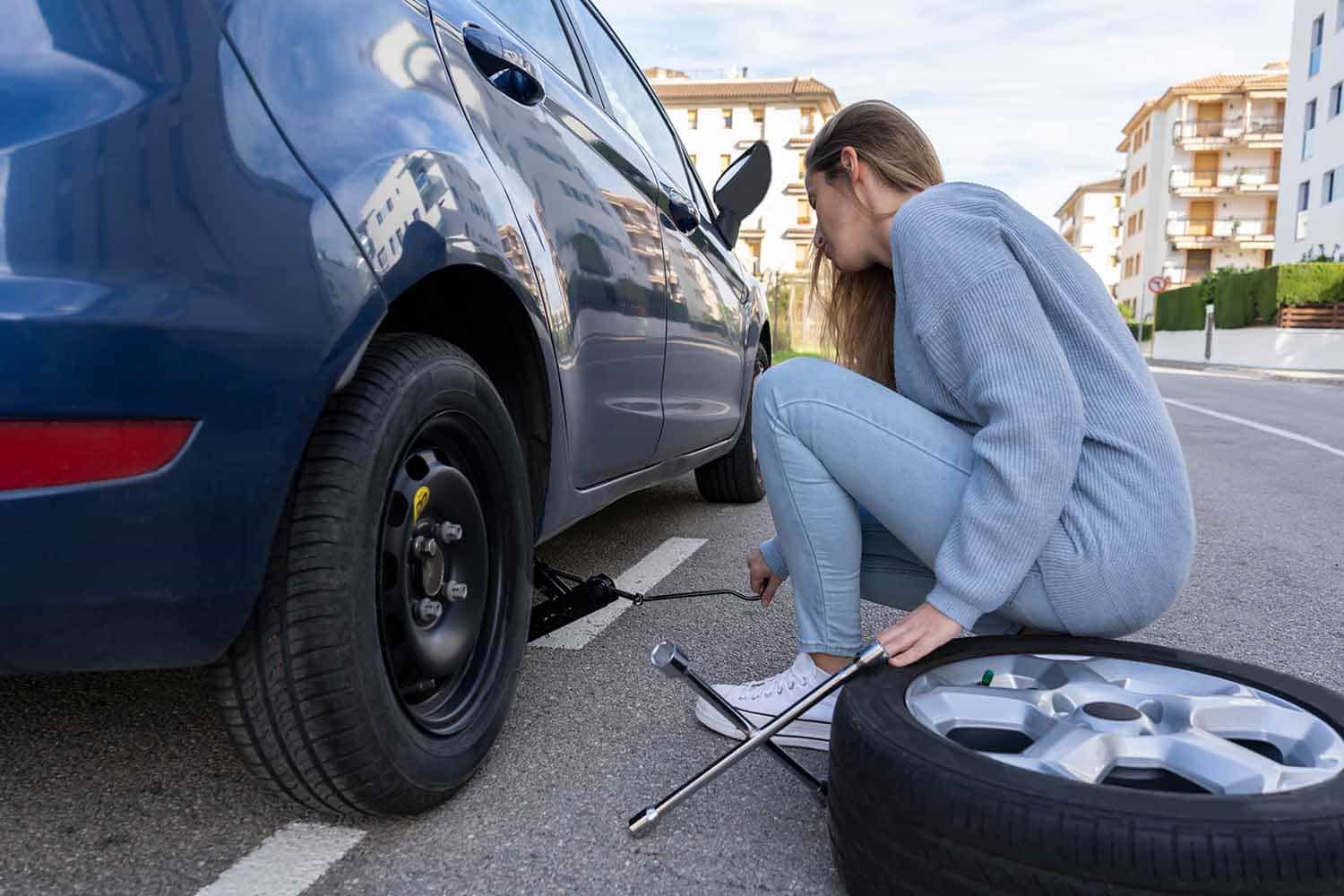Find out the information you need about What Should I Do If I Have A Flat Tire in this article, all summarized clearly by us.
Flat tires are an inevitable part of driving, often occurring at the most inconvenient times. Whether you’re in the middle of a long road trip or simply running errands, a flat tire can throw a wrench into your plans. However, with the right knowledge and preparation, you can handle a flat tire safely and efficiently.

What Should I Do If I Have A Flat Tire
In this comprehensive guide, we’ll take you through the steps of changing a flat tire, provide expert advice, and discuss the latest trends in tire technology. By the end, you’ll be equipped with the confidence and know-how to tackle a flat tire head-on.
Safety First: Securing Your Vehicle
Before you even attempt to change a flat tire, it’s crucial to ensure the safety of yourself and your passengers. Pull over to a well-lit, safe location away from traffic. Engage the parking brake and put the vehicle in park (automatic) or first gear (manual). Turn on your hazard lights to alert other drivers and increase visibility.
Tools You’ll Need: The Essentials for Tire Changing
To change a flat tire successfully, you’ll need a few essential tools:
- Jack: This device will lift your vehicle off the ground, providing access to the flat tire.
- Lug wrench: Used to loosen and tighten the lug nuts holding the tire in place.
- Spare tire: The fifth wheel that comes with your vehicle as a replacement for a flat tire.
- Wheel chocks: Place these behind the wheels opposite the flat tire to prevent the vehicle from rolling while it’s lifted.
Step-by-Step Guide: Replacing Your Flat Tire
- Gather your tools: Make sure you have all the necessary tools within reach.
- Loosen lug nuts (but don’t remove): Use the lug wrench to loosen the lug nuts on the flat tire, but don’t remove them completely.
- Jack up your vehicle: Position the jack at the designated jack points on your vehicle’s frame. Slowly pump the jack until the flat tire is a few inches off the ground.
- Remove lug nuts and flat tire: Once the vehicle is securely lifted, remove the loosened lug nuts by hand and carefully lift the flat tire away from the wheelbase.
- Mount spare tire: Align the spare tire with the wheelbase and lift it into place. Hand-tighten the lug nuts onto the bolts.
- Lower vehicle and tighten lug nuts: Slowly lower the vehicle by releasing the jack. Once the tire is firmly on the ground, use the lug wrench to tighten the lug nuts as much as possible by hand.
- Fully tighten lug nuts: Lower the vehicle completely and use the lug wrench to fully tighten the lug nuts using short, sharp bursts of force.
Expert Tips and Advice for Flat Tire Management
- Regular tire maintenance: Ensure regular tire inspections and maintenance to prevent potential flat tires caused by low tire pressure or worn tread.
- Stay alert while driving: Be attentive to road conditions and avoid driving over objects that could puncture your tires.
- Practice makes perfect: Familiarize yourself with the steps of changing a flat tire in a controlled environment before experiencing an actual emergency.
- Consider roadside assistance: Invest in a roadside assistance plan to provide peace of mind and professional assistance when faced with a flat tire.
Frequently Asked Questions: Unraveling Common Concerns
Q: Can I drive on a flat tire?
A: No, it’s dangerous and can cause further damage to your vehicle.
Q: How often should I check my tire pressure?
A: Check your tire pressure monthly, particularly before long trips.
Q: What should I do if I have a spare tire but no tools?
A: Call for roadside assistance or ask a nearby mechanic for help.
Conclusion: Staying Prepared for Flat Tires
Whether you’re an experienced driver or a novice behind the wheel, understanding how to change a flat tire is an essential skill. By following the steps outlined in this guide, you’ll gain the confidence to tackle this task safely and efficiently. Remember to prioritize safety and regular tire maintenance, and consider additional resources such as roadside assistance to ensure a hassle-free driving experience.
Are you interested in learning more about flat tire management? Leave a comment below and let’s continue the conversation.
What Should I Do If I Have A Flat Tire

Image: towingless.com
You have read an article about What Should I Do If I Have A Flat Tire. Thank you for visiting our website and taking the time to read. We hope you benefit from What Should I Do If I Have A Flat Tire.